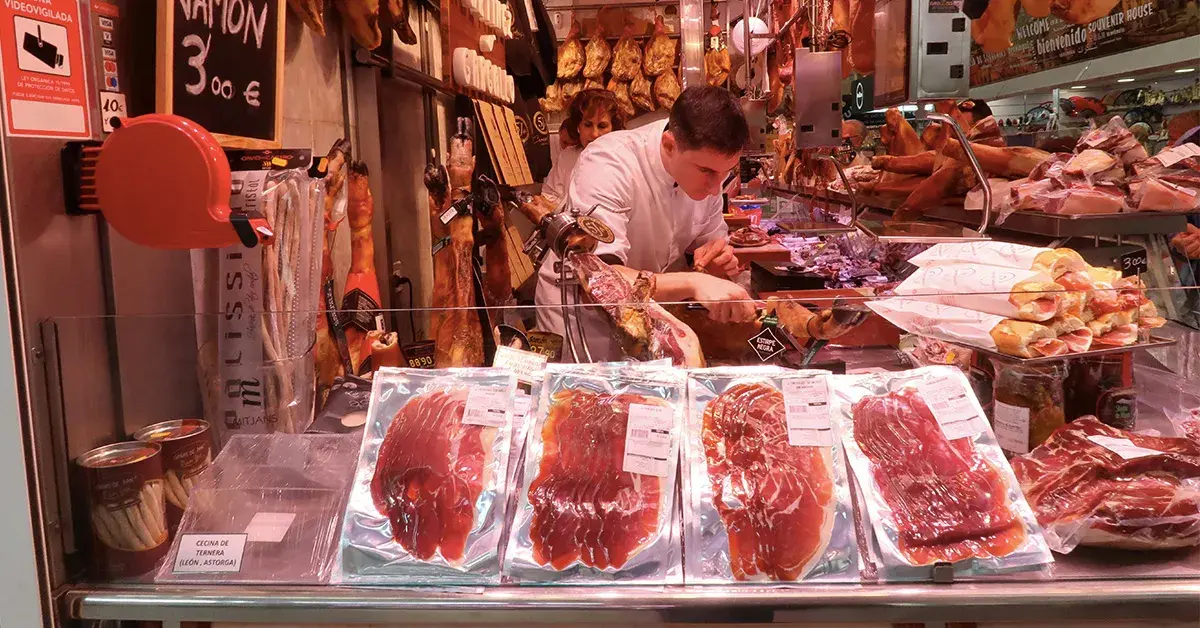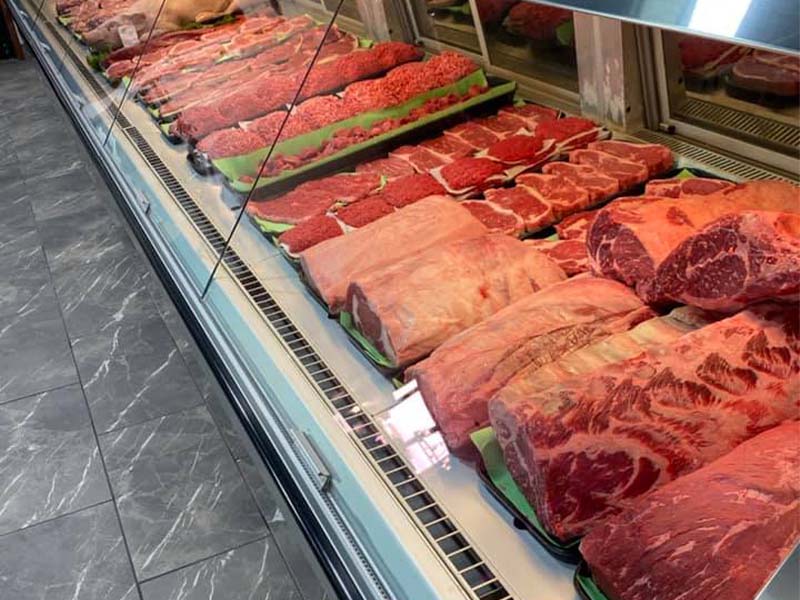Get the Best Deals on Fresh Meat at Bagley Farms Meat Market Edwardsville IL
Get the Best Deals on Fresh Meat at Bagley Farms Meat Market Edwardsville IL
Blog Article
Discover the Art of the Butcher's Cut in a Modern Meat Market
In the ever-evolving landscape of modern meat markets, the butcher's cut has transcended its traditional origins, combining olden craftsmanship with contemporary techniques. bagley farms meat market edwardsville il. Today's butchers are not just processors of meat; they are well-informed artisans that highlight sustainability and honest sourcing. Their competence in picking and preparing cuts tailored to certain culinary requirements uses an unparalleled eating experience. What really establishes the contemporary butcher apart is their ability to build a much deeper connection in between consumers and the beginnings of their meat. Exactly how do these masters balance practice with advancement, and what ramifications does this have for the future of meat intake?
Development of Butchery Strategies

The mid-20th century saw butchery methods additionally fine-tuned by scientific insights into muscle biology and meat aging, boosting both inflammation and taste. Innovations like vacuum cleaner product packaging and refrigeration prolonged item shelf-life, enabling butchers to diversify offerings and boost top quality control. This period also noted the increase of specialized equipment, such as band saws and meat slicers, which increased accuracy and effectiveness in meat processing.
The 21st century has actually presented digital modern technology right into the butchery realm. Computerized systems currently help in tracking pet provenance and optimizing cuts to fulfill certain customer preferences. In addition, a renewal in artisanal butchery has arised, blending typical skills with modern understanding to deal with customers seeking honest and sustainable meat alternatives. This evolution emphasizes a vibrant interplay in between tradition and technology, meeting modern demands while maintaining the craft's heritage.

Recognizing Meat Cuts

Recognizing the ins and outs of meat cuts is essential for both butchers and consumers looking for high quality and worth. Each cut comes from a different part of the pet, presenting one-of-a-kind tastes, structures, and cooking approaches. Proficiency of these differences not only boosts cooking experiences however also takes full advantage of the utility of each carcass. For butchers, exact cuts reflect ability and respect for the craft, ensuring marginal waste and ideal yield.
The main categories of meat cuts include primitive, sub-primal, and retail cuts. Butchers then damage these down further right into sub-primal cuts, prior to finally creating retail cuts available to consumers, like ribeye or tenderloin.
Recognizing muscle structure is critical; muscle mass made use of more often by the pet often tend to be tougher and are best fit for slow-moving food preparation methods, while less-used muscle mass, like those located in the loin, are more tender and try this ideal for barbecuing or roasting. Knowledge with these differences encourages consumers to make educated options, boosting their cooking endeavors.
Picking Top Quality Meat
Choosing the appropriate meat includes more than simply selecting an aesthetically attractive piece from the display screen. The art of choosing quality meat calls for a critical eye and knowledge of details qualities that represent freshness and quality.
Secondly, take into consideration the marbling, which refers to the white streaks of fat within the muscle mass. Proper marbling is a crucial indication of inflammation and flavor, as it thaws during food preparation, enhancing the meat's juiciness. Keep in mind, higher marbling usually correlates with premium top quality cuts, such as USDA Prime.
Structure is another important element; meat needs to feel strong to the touch, not slimy or excessively soft. Additionally, be conscious of the scent. Fresh meat must have a tidy, neutral odor, free from any type of sour or repulsive odors.
Combining Cuts With Cooking Approaches
Effectively coupling cuts of meat with the suitable food preparation approaches is vital for attaining optimal flavor and structure. Different cuts differ in inflammation, marbling, and connective tissue material, each needing details techniques to unlock their capacity. For example, tender cuts like filet mignon and ribeye, with their fundamental marbling, gain from high-heat, quick-cooking techniques such as barbecuing or pan-searing. These techniques boost the meat's all-natural tastes and make sure a juicy coating.
Conversely, tougher cuts like brisket and chuck roast are rich in collagen, which breaks down into gelatin when cooked slowly. These cuts are perfect for braising or sluggish roasting, permitting the meat to soften with time and develop deep, complicated flavors. Cuts such as short ribs and pork shoulder fare well with slow-cooking methods, where prolonged cooking times transform their robust textures right into delicious dishes.
Lamb shanks and oxtail, which require long term food preparation to tenderize, are ideal prospects for stewing or slow simmering. These methods coax out abundant, hearty flavors while keeping wetness. By comprehending the unique attributes of each cut, chefs and home cooks alike can boost their culinary creations, making certain each meal is both satisfying and remarkable.
The Butcher's Function Today
Navigating the progressing landscape of the modern meat market, the butcher's duty today prolongs beyond plain preparation of cuts. Contemporary butchers are cooking artisans, instructors, and advocates for lasting methods. They bridge the space between the ranch and the fork by guaranteeing moral sourcing, understanding pet husbandry, and prioritizing openness in the supply chain. This shift mirrors the growing customer demand for top quality over quantity, where provenance and pet well-being are vital.
In enhancement to crafting precise cuts, butchers currently involve directly with clients, supplying cooking guidance and customizing options to suit private requirements and choices. Their know-how in meat aging, marbling, and taste profiles equips customers to make enlightened decisions, improving their cooking experiences. This tailored solution exhibits the butcher's evolving function as a relied on expert in the kitchen area.
In addition, butchers are pivotal in lessening waste, making use of whole pets to develop varied items such as sausages and supplies - bagley farms meat market edwardsville il. This comprehensive method not Continued only appreciates the pet however also aligns with contemporary sustainability goals. In this method, the contemporary butcher personifies these details both custom and development, adapting to an ever-changing market while protecting the artistry and stability of their craft

Final Thought
The contemporary butcher's craft delicately weaves standard techniques with modern-day advancements, emphasizing lasting techniques and ethical sourcing. Proficiency in comprehending varied meat cuts and high quality indicators encourages butchers to offer enlightened suggestions, lining up details cuts with ideal food preparation techniques. This knowledge not just raises cooking experiences but additionally strengthens the link between customers and the origins of their food. By recognizing historical methods while welcoming contemporary needs, the butcher's role stays essential in today's innovative meat market.
Report this page